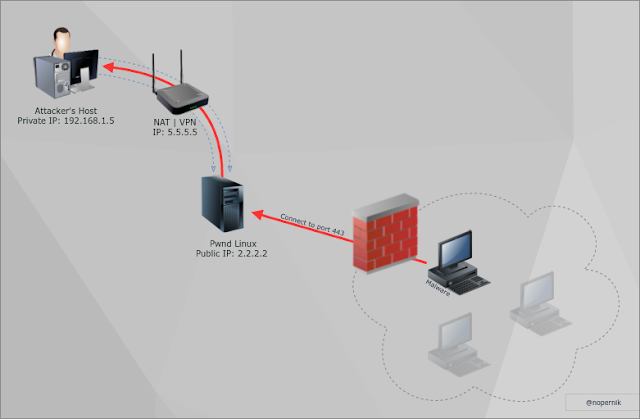But in this case, every new payload should be added manually. Not fun.
Again, some automation and now it will be automatically generated.
root@kali:/opt/metasploit-framework# git clone https://github.com/nopernik/msfvenom-bc-generator
Cloning into 'msfvenom-bc-generator'...
remote: Counting objects: 9, done.
remote: Compressing objects: 100% (7/7), done.
remote: Total 9 (delta 1), reused 0 (delta 0), pack-reused 0
Unpacking objects: 100% (9/9), done.
root@kali:/opt/metasploit-framework# mv ./msfvenom-bc-generator/msfvenom_bc_generator.rb .
root@kali:/opt/metasploit-framework# ruby msfvenom_bc_generator.rb
[+] Collecting output formats
[+] Collecting payloads
[+] Collecting encoders
[+] Collecting nops
[+] Generating bash_completion file
[+] Writing out /etc/bash_completion.d/msfvenom
[+] Done. Open a new terminal and type msfvenom TABTAB :)
root@kali:/opt/metasploit-framework# msfvenom -p linux/x86/ <tab><tab>
linux/x86/adduser linux/x86/meterpreter/reverse_tcp linux/x86/shell_bind_tcp_random_port
linux/x86/chmod linux/x86/meterpreter/reverse_tcp_uuid linux/x86/shell/bind_tcp_uuid
linux/x86/exec linux/x86/metsvc_bind_tcp linux/x86/shell_find_port
linux/x86/meterpreter/bind_ipv6_tcp linux/x86/metsvc_reverse_tcp linux/x86/shell_find_tag
linux/x86/meterpreter/bind_ipv6_tcp_uuid linux/x86/read_file linux/x86/shell/find_tag
linux/x86/meterpreter/bind_nonx_tcp linux/x86/shell_bind_ipv6_tcp linux/x86/shell/reverse_ipv6_tcp
linux/x86/meterpreter/bind_tcp linux/x86/shell/bind_ipv6_tcp linux/x86/shell/reverse_nonx_tcp
linux/x86/meterpreter/bind_tcp_uuid linux/x86/shell/bind_ipv6_tcp_uuid linux/x86/shell_reverse_tcp
linux/x86/meterpreter/find_tag linux/x86/shell/bind_nonx_tcp linux/x86/shell/reverse_tcp
linux/x86/meterpreter/reverse_ipv6_tcp linux/x86/shell_bind_tcp linux/x86/shell_reverse_tcp2
linux/x86/meterpreter/reverse_nonx_tcp linux/x86/shell/bind_tcp linux/x86/shell/reverse_tcp_uuid
root@kali:/opt/metasploit-framework# msfvenom -p linux/x86/
Available on github: https://github.com/nopernik/msfvenom-bc-generator

